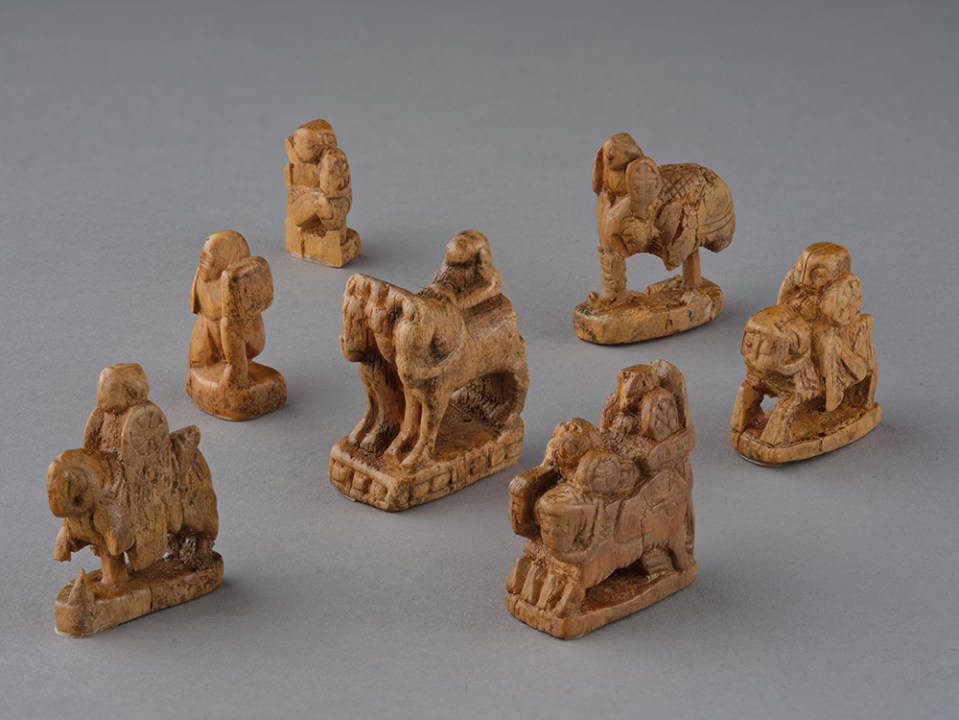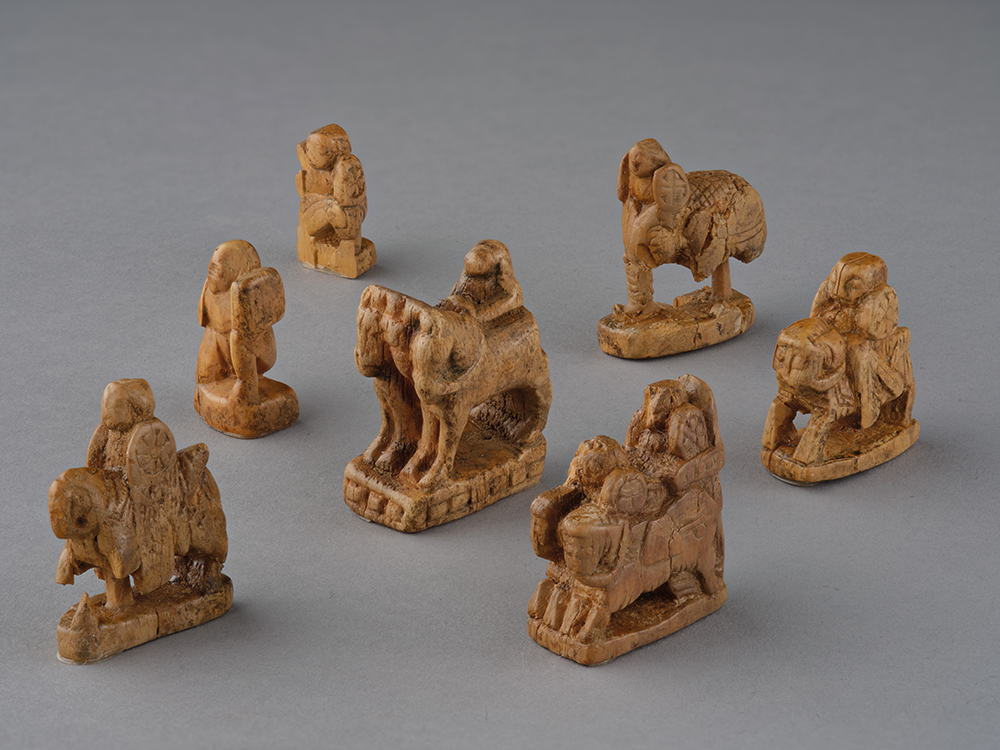
Towards the end of the British Museum’s Silk Roads show, there is a selection of treasures found in England. Among them is a copper flagon made in Syria and buried in Essex in the late 500s. It is believed that the flagon belonged to an English mercenary who went to fight for the Byzantines against the Sassanians in the 570s. The flagon’s looping handle would have held it tight to a saddle, so perhaps it came to England attached to the warrior’s horse as he rode home from his adventures in the East.
There are many spectacular objects in this exhibition. Very many
If objects are to inspire more than awe in us, we also need a handle. We need a detail or scrap of a story, something that will allow us to animate the object in the way that the Essex mercenary’s flagon allows us to imagine his journey back from the Middle East. Wrapped around the flagon is a bracelet with an image of St Sergius, the Syrian Christian martyr venerated as a protector of soldiers. Perhaps the Essex mercenary went to Resafa in Syria, between Palmyra and the Euphrates, and purchased the bracelet at the saint’s basilica. And with that possibility, my mind begins to wander across the many Syrian roads I have travelled and I am lost in dreams, in the same way that many of us dream when we hear those two words, Silk Roads.
This dreamy association is something the British Museum exploits with its exhibition poster of a camel train on a sand dune. The image conjures up the vast distances, desert and mountain, that had to be crossed so that goods, knowledge and beliefs could moved between East and West. It reminds us of travellers such as Marco Polo and, a little more recently, of Aurel Stein.
One of the things the exhibition does well is to meet our expectations as well as, at the same time, to confound them.

Magazine articles are subscriber-only. Keep reading for just £1 a month
SUBSCRIBE TODAY- Free delivery of the magazine
- Unlimited website and app access
- Subscriber-only newsletters








Comments
Join the debate for just $5 for 3 months
Be part of the conversation with other Spectator readers by getting your first three months for $5.
UNLOCK ACCESS Just $5 for 3 monthsAlready a subscriber? Log in